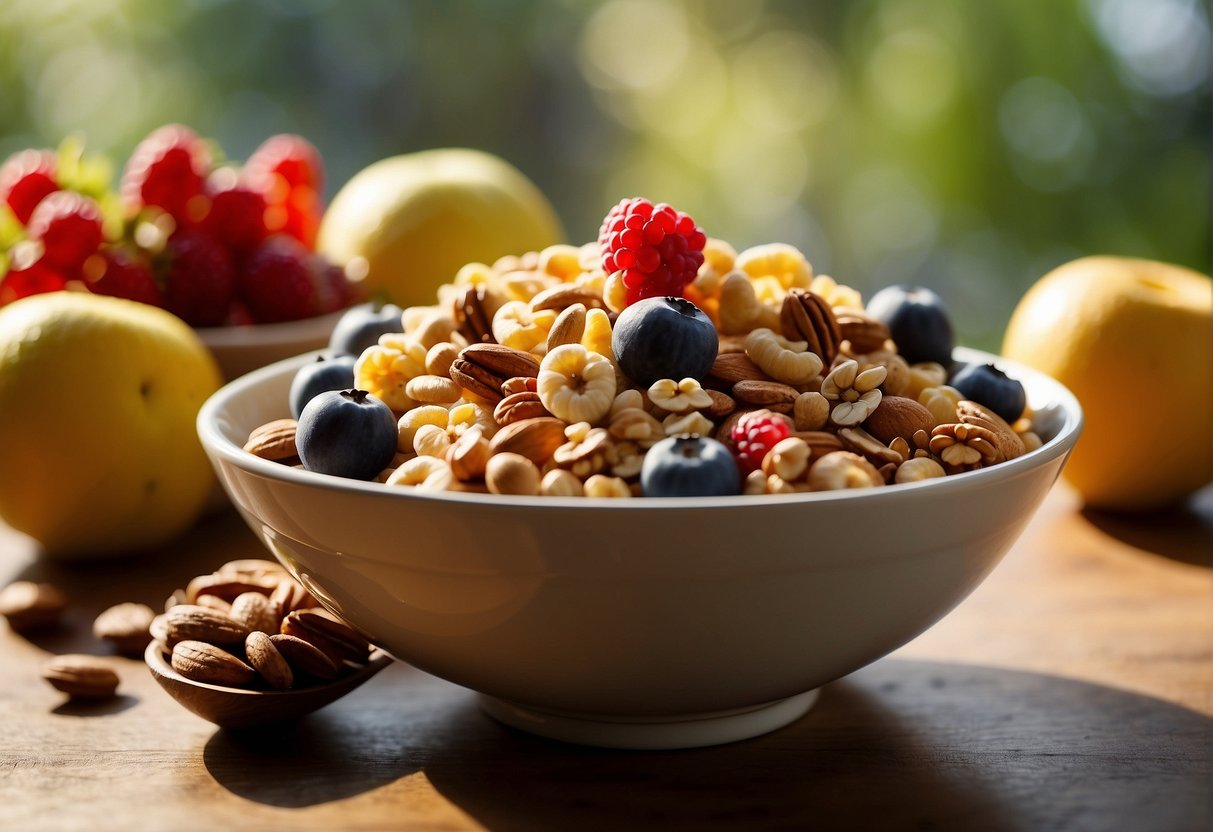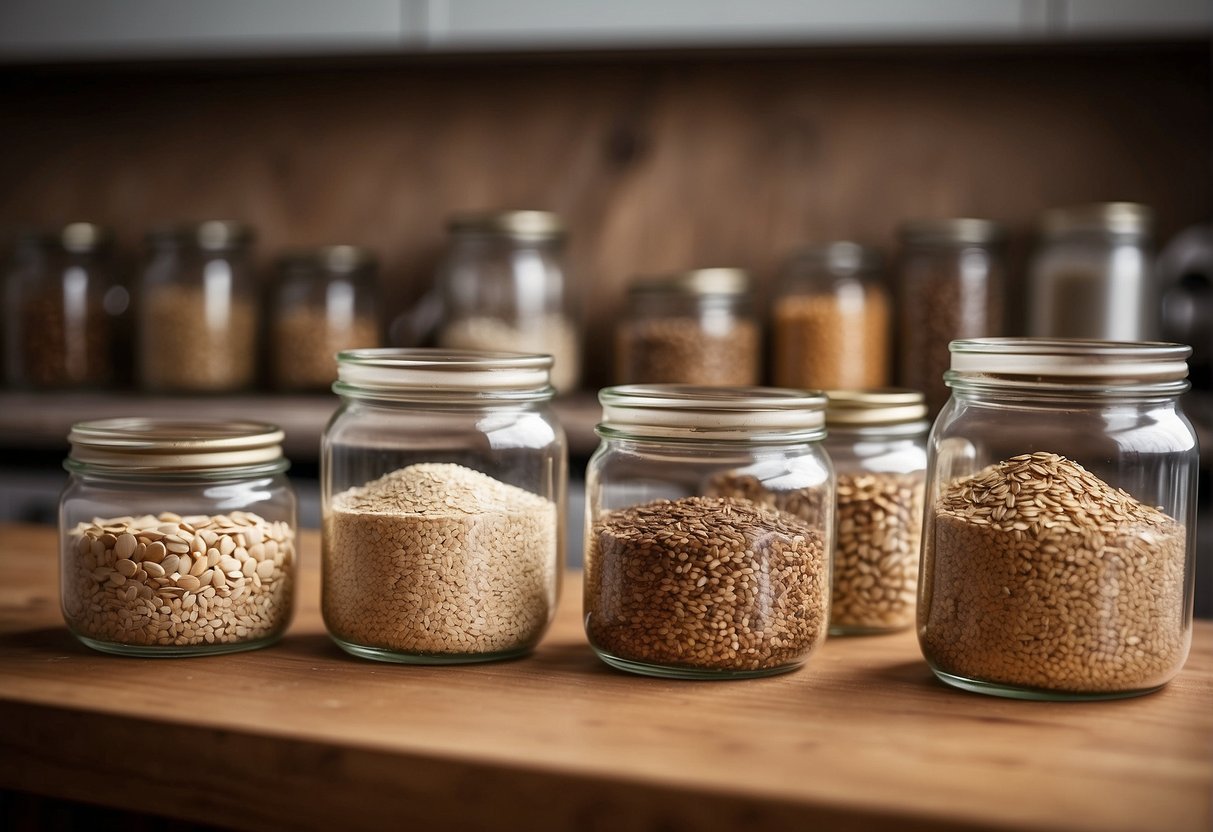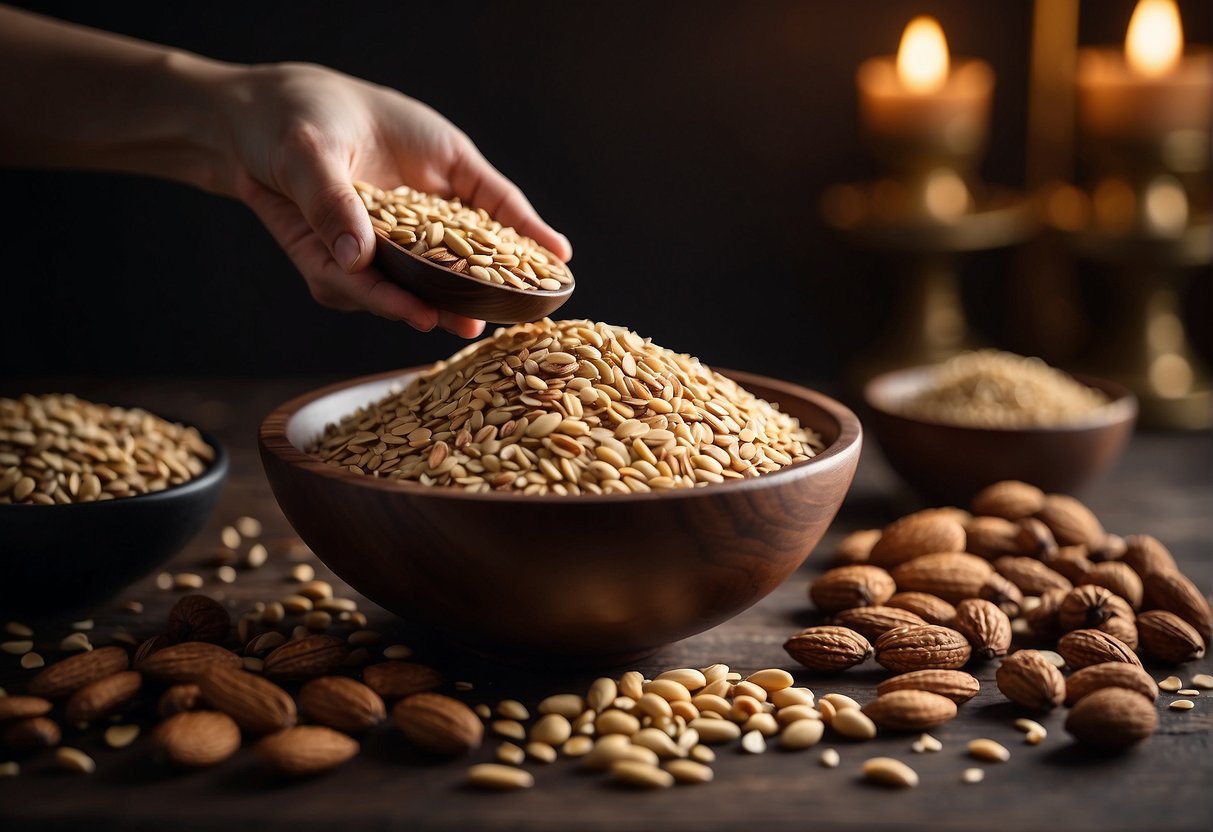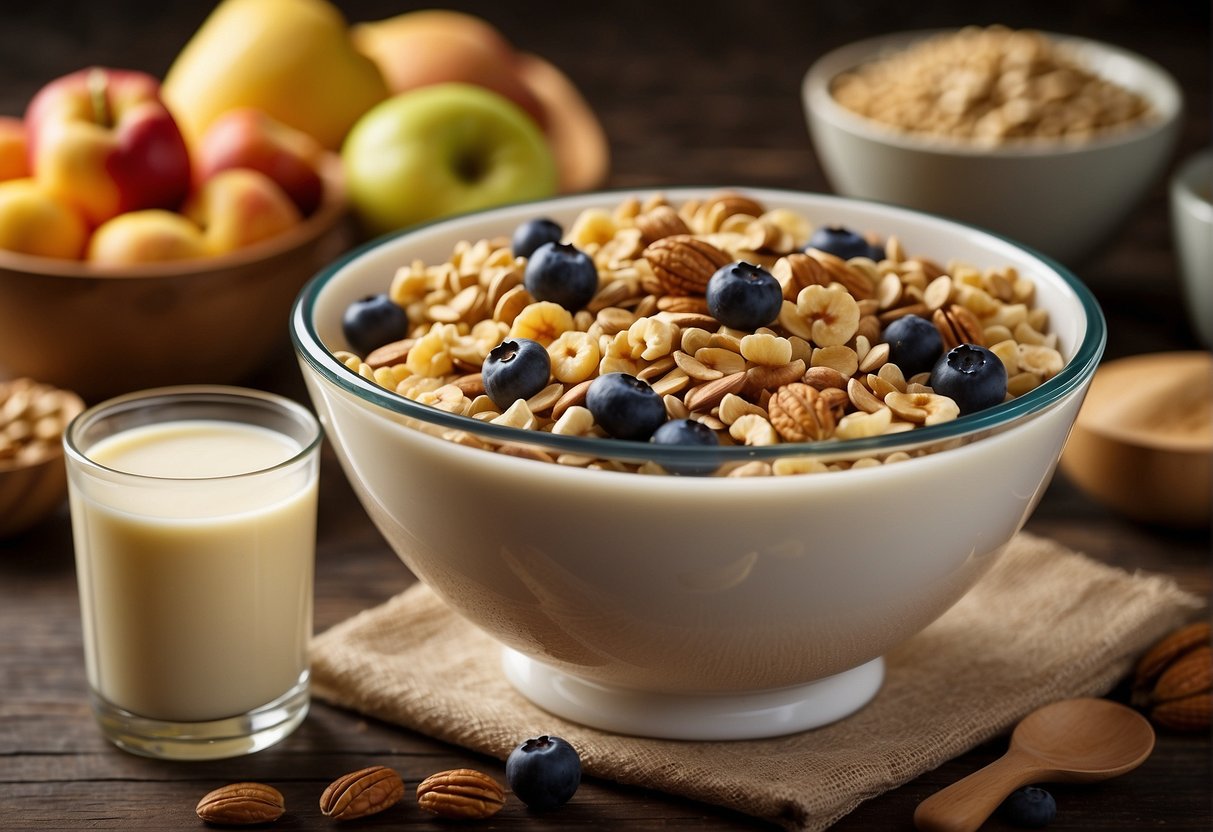I often turn to 7-grain cereal as a hearty and healthy breakfast option. Full of fiber-rich whole grains, this multigrain cereal packs a nutritious punch to start the day off right. With a combination of grains like wheat, rye, oats, barley, brown rice, and others, each serving is not only a trip through a variety of textures and flavors but also a step towards meeting my daily nutrient intake goals. It’s a hot cereal mix you can feel good about serving to your family. 7 grain cereal is one of my favorite ways to eat grains because there are so many yummy recipes to make when it comes to 7 grain cereal!

Cooking 7-grain cereal is straightforward and offers a wholesome alternative to processed breakfast choices. My method involves bringing water or milk to a gentle boil, adding the 7-grain cereal, stirring, and reducing the heat. Within minutes, the grains absorb the liquid, soften, and the cereal is ready to be served. The versatility of this cereal also allows for creativity; I can top it generously with fresh fruit, a drizzle of honey, or a sprinkle of nuts, catering it to my liking each day.
What makes 7-grain cereal an excellent breakfast choice is its inherent adaptability to different dietary needs and the ease with which it can be prepared. Whether I am seeking a warm, energy-sustaining meal to gear up for the day or a nutritious cornerstone for my meal plan, this multigrain cereal fits seamlessly into my morning routine.
Selecting Your Grains

When I make 7 grain cereal, selecting high-quality whole grains is crucial for both nutrition and flavor. Here’s how I navigate through the options available.
Understanding Whole Grains
Whole grains are seeds of plants that contain all three parts: the bran, germ, and endosperm. Each part provides various nutrients and health benefits. For example, oat bran is an excellent source of dietary fiber, while the germ is rich in oils, protein, and antioxidants. When I select grains, I ensure they’re labeled “whole,” which means they’ve retained all their natural components after processing.
Popular Grain Choices
The foundation for any hearty 7 grain cereal starts with brown rice and wheat berries. Brown rice is a versatile whole grain providing a chewy texture with a buttery nutty flavor, while wheat berries impart a robust taste and a satisfying bite. I often add oat bran for its fiber-rich profile, and flax seed as well as chia seeds for their omega-3 fatty acids content.
I enjoy including heritage wheat, sometimes sourced from Sunrise Flour Mill, for its unique flavor that differs from the common wheat found in many grocery stores. For additional crunch and nutrients, sunflower seeds are a top choice. Lastly, if I’m short on individual grains, I might pick a premixed blend from a trusted brand like Bob’s Red Mill, known for its wide selection of whole grain products.
In crafting a multigrain cereal, it’s essential to strike a balance between taste and nutritional benefits. With these grains, I find my 7 grain cereal becomes not only a healthful start to the day but also a genuinely delightful breakfast experience.
Preparing the Cereal Mixture
Before we start mixing, it’s crucial to understand that a well-prepared cereal mixture is not just about tossing grains together. It’s a deliberate process to create a flavorful and nutritious base for your meals.
Mixing the Grains
I begin with a large bowl, which gives me ample space to mix my grains thoroughly. I make sure all dry ingredients are measured with precision to maintain consistency in texture and taste. By using equal parts of each grain, I ensure that every spoonful of my finished cereal mixture offers a balanced array of flavors.
Creating a Balanced Blend
To enhance the nutritional value of my cereal mixture, I introduce a good source of fiber like golden flax, known for its essential fatty acids. I also add sunflower seeds, which not only contribute to the fiber content but also add a subtle nuttiness to the blend. This conscious effort to combine ingredients contributes to a balanced blend that supports a healthy diet.
Cooking Methods
In this section, I’ll guide you through various techniques to prepare 7 grain cereal. Each method provides a unique texture and flavor profile to your cereal porridge.
Stovetop Cooking
The stovetop method starts with a small pot or saucepan. I pour in water or a milk alternative, like almond milk or even coconut milk, to add richness. I bring the liquid to a boil before adding the cereal. Stirring consistently on medium heat ensures an even cooking process and prevents sticking. After the cereal mixture starts to thicken, which takes about 5-7 minutes, I reduce to low heat and let it simmer until it reaches the desired consistency.
Baking Options
Baking 7 grain cereal creates a comforting and wholesome dish. Preheat your oven to the degree of 350°F (175°C) and mix the dry cereal with your choice of milk or water. Add-ins like nuts or dried fruit can be included. Pour all of the the mixture into a baking dish and bake until top is nicely golden and the cereal is set. This could take approximately 30 minutes. The result is a hearty cereal that feels more like a treat.
Instant Cereal Alternatives
For a quicker alternative, instant versions of 7 grain cereals are available, such as quick oats, which significantly reduce the cooking time. Simply add hot water or microwaved milk to the cereal, stir, and let it sit for a minute or two. It’s convenient and still offers the nutritional benefits of the grains. Some retailers even offer free shipping on these products for added convenience.
Customizing Your Cereal

Creating a cereal that caters to my personal taste and nutritional needs is a rewarding experience. I like to ensure that every spoonful is both delicious and nourishing. Here’s how I take a basic 7 grain cereal and make it my own.
Sweetening Your Cereal
I typically shy away from refined sugars, opting instead for natural sweeteners. For a subtle sweetness, I sprinkle brown sugar to my liking, always mindful not to exceed the daily values for added sugars. If I’m in the mood for a richer taste with added benefits, a drizzle of maple syrup not only sweetens my cereal but also imparts a delightful aroma that makes breakfast a little more special.
Nutty and Fruity Additions
Adding nuts and fruits is my favorite way to rev up the nutritional profile and taste of my cereal. Here’s how I incorporate them:
| Nuts/Seeds | Fruits |
|---|---|
| Sesame seeds | Sliced fresh fruit |
| Chia seeds |
I toss a handful of sesame seeds for a crunch and a boost of calcium. To increase my cereal’s fiber content and omega-3s, I generously sprinkle chia seeds. As for fruits, nothing beats adding seasonal fresh fruit to the mix—berries in the summer, apples in the fall, or citrus in the winter.
Finally, a slice of multigrain loaf on the side makes for a wholesome, fiber-packed breakfast that keeps me energized throughout the morning.
Nutritional Information and Benefits

In my exploration of seven-grain cereal, I’ve found it’s not only an exceptionally hearty breakfast choice but also a powerhouse of nutrition. It’s packed with benefits that cater to a well-balanced diet.
Dietary Fiber and Its Importance
I understand the significance of dietary fiber, which aids in digestion and can help maintain a healthy weight. Seven-grain cereal is an excellent source of fiber, meeting a notable amount of the daily values needed in a balanced diet. Consuming this cereal contributes to the feeling of fullness, which can prevent overeating, and supports the body’s digestive process.
Essential Nutrients in Seven-Grain Cereal
As for nutrients, seven-grain cereal stands out as it includes a variety of whole grains that are beneficial for health. It’s a good source of essential nutrients like B vitamins, iron, magnesium, and zinc. Moreover, the inclusion of grains like flaxseed provides essential fatty acids, which are important for heart health. Here are some key nutrients per typical serving size and their benefits:
- B Vitamins: Crucial for energy production and brain function.
- Iron: Vital for carrying oxygen in the blood.
- Magnesium: Supports muscle and nerve function.
- Zinc: Aids in immune system function.
The combination of these nutrients in a single meal makes seven-grain cereal an excellent product for a nutritious start to the day.
Frequently Asked Questions
In this section, I address some of the most pressing questions you might have about cooking with 7 grain cereal. I’ll cover the essentials of ingredients, preparation, customization, and dietary consideration, providing clear and precise answers to elevate your cooking experience with this versatile cereal.
What are the common ingredients used in a 7 grain cereal recipe?
The typical ingredients in a 7 grain cereal recipe include a mix of whole grains such as wheat, rye, oats, barley, brown rice, buckwheat, and millet. These provide a robust flavor and high nutritional value.
| Grain | Description |
|---|---|
| Wheat | Common staple, high in fiber and protein |
| Oats | Heart-healthy, rich in antioxidants |
| Barley | Nutritious with a chewy texture |
| Rye | Earthy flavor, good for digestion |
| Quinoa | Complete protein source, gluten-free |
| Millet | Mild flavor, versatile in cooking |
| Brown Rice | Whole grain option, rich in minerals |
How can I make a healthy version of a 7 grain cereal at home?
To make a healthy version of 7 grain cereal at home, use all-natural grains and avoid adding excess sugar. You can sweeten your cereal naturally with fruits or a dab of honey.
What are some good substitutes for 7 grain cereal in recipes?
Good substitutes for 7 grain cereal include oatmeal, quinoa, or a mix of your preferred whole grains that mimic the texture and nutritional profile of the original ingredient.
How can I incorporate 7 grain cereal into bread making?
Incorporating 7 grain cereal into bread making involves adding soaked or cooked cereal to your dough mixture, which yields a hearty texture and a rich, nutty flavor in the final bread product.
Are there any overnight 7 grain cereal recipes?
Yes, there are overnight recipes that involve soaking 7 grain cereal in milk or water to soften the grains and to make them more digestible, which results in a convenient and healthy breakfast option.
Can 7 grain cereal be considered beneficial for a well-balanced diet?
7 grain cereal is indeed beneficial for a well-balanced diet as it provides a source of fiber, protein, and essential vitamins and minerals, supporting overall health.
7 Grain Cereal Recipe
Course: BreakfastCuisine: AmericanDifficulty: Easy6
servings5
minutes20
minutesFeel energized to start your day with this amazingly healthy hot cereal. It’s so tasty, too!
Ingredients
1/2 cup rolled oats
1/4 cup quinoa
1/4 cup millet
1/4 cup amaranth
1/4 cup barley
1/4 cup spelt
1/4 cup flaxseeds
4 cups water
Optional toppings: honey, fresh fruits, nuts, and seeds
Directions
- In a large saucepan, combine all the grains and flaxseeds.
- Add water and bring the mixture to a boil.
- Reduce the heat and let the cereal simmer for about 15-20 minutes, stirring occasionally.
- Once the grains are cooked and the mixture has thickened, remove from heat.
- Serve the cereal in bowls and add your favorite toppings such as honey, fresh fruits, nuts, and seeds.


